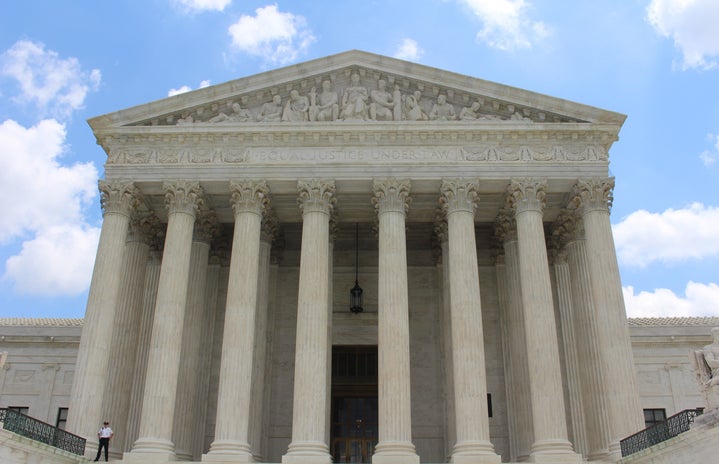*This piece reflects the opinions of the writer and is not a reflection of the views of Her Campus*
On September 26, just 35 days before the presidential election, Donald Trump nominated Amy Coney Barrett to the Associate Justice of the Supreme Court position. The decision for Amy Coney Barrett to fill the empty spot left by the death of Ruth Bader Ginsburg enraged citizens across the country. In February of 2016, the Republican-majority Senate led by Mitch McConnell shot down Obama’s nomination of Merrick Garland after stalling past the date of expiration for the nomination. Yet, just a few weeks before the presidential election, Trump nominated Amy Coney Barrett, and in doing so, gave more power to conservatives in the Supreme Court.
One of the biggest concerns regarding Barrett is her stance on reproductive issues such as abortion. According to the Center for Reproductive Rights, Barrett has ruled against abortion rights each time a case has been presented to her while serving on the U.S. Court of Appeals. The New York Times found that in 2006, Barrett signed an ad created by an anti-abortion group called St. Joseph County Right to Life. That ad asked people to “continue to pray to end abortion.” In 2013, when Barrett was teaching at Notre Dame Law School, she signed another ad that criticized Roe v. Wade and called for “the unborn to be protected in law.”
Barrett’s conservative views are not only a cause for concern when it comes to abortion but birth control and contraceptives as well. While Barrett has been hesitant to explicitly state her opposition toward reproductive health rights, she has refused to show her support toward certain landmark cases such as Griswold v. Connecticut which legalized access to birth control in the 60’s. According to Barrett, she can’t state definitively whether Griswold v. Connecticut was rightfully decided because “she can’t grade precedent.” Though Barrett blames her unwillingness to support Griswold v. Connecticut on the fact that she can’t grade precedent, she has made her opinion on other decisions such as Brown v. Board of Education and Loving v. Virginia very clear and has stated that they were rightfully decided. Why is it that she can make her stance on these two decisions clear but makes excuses as to why she can’t support a decision like Griswold v. Connecticut?
With the confirmation of Amy Coney Barrett, the Supreme Court has a 6-3 conservative-liberal majority which makes it the most conservative it’s been since the 1930’s. By filling the empty seat left by Ruth Bader Ginsburg, the Supreme Court’s most liberal judge, Amy Coney Barrett tips the scales in favor of the most conservative ideologies. Because of this, the addition of Barrett to the highest court of law in the country puts vital rights, such as the right to abortion and access to birth control, at risk of being overturned or being made inaccessible to women.


